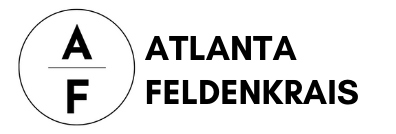In almost everything.

“Most of the time we fail to achieve what we want by enacting more than we are aware of, rather than by missing what is essential.”
moshe feldenkrais
The phrase “Less is more” is sometimes used to promote a minimalist approach to artistic or aesthetic undertakings.
Or even as a way of achieving a less cluttered life, à la Marie Kondo’s popular book, “the life-changing magic of tidying up.”
While the benefits of an uncluttered approach to art, or your closet, should not be underestimated, what if I were to tell you that identifying and eliminating the non-essential, is the most important skill you can learn?
That it plays an important role in determining how quickly you are able to learn new skills, whether your joints and your relationships stay healthy as they age, and even how well you do in your profession as well as a parent?
Counterintuitively, doing less can make you faster!
This is the premise we are going to delve into in this article.
Let us start with how less is more when learning a new skill.
In learning anything new, we tend to exert more effort than needed. In “The Brain That Changes itself”, Dr. Norman Doidge writes: “When a child learns to play piano scales for the first time, he tends to use his whole upper body – wrist, arm, shoulder – to play each note. Even the facial muscles tighten into a grimace.“
Dr. Feldenkrais provides a similar example in “The Potent Self”, that while learning how to swim: “One tenses and enacts a considerable number of unnecessary and contradicting elements of action; only later on does one appreciate how much more one did than what was actually wanted.“
As beginners, our lack of skill is readily apparent from the extra movements and the effort we put in. As we get better at it, we start to do less.
Dr. Doidge continues, “With practice the budding pianist stops using the irrelevant muscles and soon uses only the correct finger to play the note.
He develops a “lighter touch,” and if he becomes skillful, he develops “grace” and relaxes when he plays. This is because the child goes from using a massive number of neurons to an appropriate few, well matched to the task.”
Notice the reference to “grace”.
Each of us can identify the master craftsman, dancer, or athlete from the lack of visible effort or superfluous movements as they perform the most difficult of actions.
Dr. Feldenkrais agrees, “The expert swimmer produces only those movements that are wanted, and herein lies his skill. His action corresponds to the clear motivation and to that only.”
A skill is learned once the necessary changes happen in the nervous system. As our skill level improves, we actually use fewer neurons and fewer muscles for the same movements or actions.
Dr. Doidge describes an experiment where a monkey’s sensory cortex was mapped using a microprobe. Then the monkey was trained to touch a spinning disk with its fingertip with just the right amount of pressure for ten seconds.
If done correctly, the monkey would get a reward. The task required the monkey to pay close attention to touch the disk very lightly, and at the same time, make an accurate estimate of the time.
After thousands of trials, the monkey’s brain was remapped and it was found that the area corresponding to the monkey’s fingertip had become larger. The experiment confirmed what we learned in “Chapter 1 – Do You Feel Old?”, that when we engage our attention to learn, it leads to physical changes in the brain.
The experiment had another interesting discovery: “As brain maps get bigger, the individual neurons get more efficient in 2 stages.
At first, as the monkey trained, the map for the fingertip grew to take up more space. But after a while, individual neurons within the map became more efficient, and fewer neurons were required to perform the task.”
We could considerably shorten the time it takes to learn a new skill, and in theory “One could swim straight away if one could eliminate all the parasitic acts and perform only those movements that propel one in the direction wished.
In the learning stage, a number of habitual and faintly recognized motivations enact themselves. The essential in learning is to become able to recognize these unwanted faint motivations and to discard them.”
In other words, one masters a skill by identifying and eliminating what is non-essential.
As a general rule, for any movement that is skillfully executed, the large muscles surrounding the pelvis act as the main source of power. The role of the skeleton is to transmit this power to the extremities while supporting the body in gravity.
The smaller muscles of the limbs and extremities work only to place the bones in the correct position to allow the force coming from the pelvis to be properly directed.
For example, an expert tennis player or golfer creates the power of the swing from the rotation of the torso. The arms and the grip are held loose, serving only to provide leverage and to direct the movement of the racquet or the club face. A swing produced in this manner generates the maximum racquet-head or club-face speed with maximum accuracy and minimum effort.
This form of musculoskeletal organization allows us to produce a powerful movement. At the same time, the sensation of effort one feels is similar to that experienced while moving a finger.
Trying to generate power from the arms, or gripping too tightly with the hands while swinging reduces the power, speed and accuracy of the swing.
It also leads to injuries.
Stiffening the muscles places a strain on the joints and repeated movements can lead to cartilage and ligament damage as well as other forms of wear and tear in the joints.
When we are unskilled at something and find ourselves struggling, there is a tendency to do too much rather than too little.
Dr. Feldenkrais writes in “The Potent Self,“ whenever resistance is sensed, “Normally, we try to remedy the situation by a further effort of “will”.
Whenever will effort is necessary, there is unrecognized cross motivation, and this is an extremely wasteful method of obtaining results. Only immature people need will effort to act. The mature person clears up all the irrelevant motivations and uses interest, necessity and skill unhindered by unrecognized emotional urges.”
This is true for every movement that we do.
When we try to overcome the resistance through more effort, rather than an increase in maturity or improvement in skill, we only serve to accelerate this damage.
The unrecognized emotional urges and unwanted “parasitic” effort exist not only in areas of new learning but also in areas where we are less skilled and our learning is incomplete or faulty.
In “Chapter 3 – Are You An Adult?” we saw how certain activities become associated with a heightened emotional state during our dependency period. This interrupts the natural process of development in those areas and leads to cross motivation and compulsive behavior which continues into the present.
This compulsive behavior, an urge to “do” and at the same time “not-do” the action, invariably results in an experience of inner resistance to the act. This inner resistance, “is always expressed through muscular tension of the muscles of the face, the neck, the abdomen, the fingers, or the toes.”
From a physiological point of view, muscular contractions in the neck, face, abdomen, fingers and toes interfere with the smooth transfer of power through the skeleton as well as the smooth articulation of the joints.
In effect, we end up working against ourselves.
This in turn affects not only our posture, or how we carry ourselves, but also how we use ourselves, our actions and even our interactions with other people.
Consider relationships.
Good friendships are those where no extraordinary effort is required for the relationship to flourish and where we can just “be ourselves.”
In presenting ourselves to people or while in social situations, the best approach is to do no more than what is essential or appropriate for that situation. People lacking self-confidence often find themselves compensating by “trying harder” to make themselves likeable.
This often leads to the opposite of the desired result. We are immediately and instinctively suspicious on meeting someone who acts in a manner friendlier than the situation merits.
On the other hand, people who are secure in themselves seldom try to be liked, or to please others in order to be accepted. They also tend to be considered as more “genuine” or “authentic” by others.
So in relationships as well, less is more.
At work, Americans were busier than ever when the pandemic started. Yet, more than one year into the pandemic, working from home did not lead to productivity losses that employers feared. Many employees are putting in fewer hours yet getting the job done. From this evidence, one suspects that employees were, knowingly or unknowingly, involved in tasks which were not essential to the fulfillment of their roles.
Looking back at my own employment history (and with the benefit of distance and some reflection), I can see that I spent a lot of my time managing people and their expectations. I would have gotten much more done in a shorter span of time if I had eliminated these extraneous efforts and instead focused on the results I wanted.
Dr. Feldenkrais writes that in any area that we find difficult, we also find that we have invariably complicated it “with economic, moral, and other considerations that turn it into a task accompanied by intense extraneous feelings. Nobody can dwell on these ideas without uneasiness, for they contain fundamental contradictions.”
Whenever we are stuck, examining one’s approach and weeding out the “fundamental contradictions” will lead to better results than by trying to work harder and push through the resistance.
Even as a parent, doing only what is necessary is the right approach.
A child comes with an in-built capacity to learn. Aside from being the source of nourishment, shelter and affection, the main role of the parent is to provide an orderly and mostly benign environment for the child to learn from experience. While the negative effects of neglect on a child are obvious, too much attention or adoration is often as detrimental for the development of the child.
As the child matures and progressively becomes more independent, the skilled parent does even less, allowing their wards to develop fully. A parent who continues to do too much, whether out of any misplaced notions of “love” or any other mismanaged motivation, is acting out their own immaturity rather than in the best interests of the child.
By now I hope I have convinced you, the reader, about the merits of discarding the unwarranted and the unnecessary.
Those of you familiar with the Pareto Principle (or the “80/20 Rule”), where 80 percent of the results come from 20 percent of the efforts, may have been nodding in agreement all along as you read.
The tricky part, or as serenity prayer goes, the wisdom lies in knowing what is unnecessary.
For many of us, a good starting point would be to realize that we are doing something superfluous in the first place.
For while we can easily recognize ease of movement and the resulting grace in other people, or correctly identify if the other person is using extra effort, we are usually unable to observe the same in ourselves.
There is a very good reason for this and we will revisit that in another article.
For now, just consider that while acting, we have little or no awareness of unnecessary effort.
As Dr. Feldenkrais says in “The Potent Self“, in our minds “even the sensation of effort we feel, and the resistance to starting or continuing, becomes part of the act and essential to its accomplishment.”
For if we were aware of what we are doing, we would do something different.
The habitual and faintly recognized motivations are so ingrained in us, and the parasitic contractions so pervasive that we can only become aware of what we are doing if we slow down and reduce the effort we are making.
This is an important concept to understand so let’s spend some time on it.
Imagine that you are in a bright, well-lit room during the day and someone lights a candle. Would you be able to tell the difference the candle made to the brightness of the room?
Now imagine instead, that you are holding a heavy object, say a barbell loaded with weight, and a butterfly alights on the barbell. Would you be able to sense the difference due to the additional weight of the butterfly?
The answer, of course, in both these cases, is no.
And this finding is explained by a historically important psychophysical law from the 19th century, called The Weber-Fechner law.
This law quantifies the perception of change for a given sensory stimulus. It was one of the first laws to be formulated for the world of sensations and the first one connecting the subjective with the objective (for context read “Chapter 4 – Is what you feel Important?”).
Initially formulated for the sensation of weight, it also applies to visual, auditory and other forms of sensory stimulus. Simply put, it states: “The change in a stimulus that will be just noticeable by a person is a constant ratio of the original stimulus.”
Going back to the two examples, the larger the original stimulus (brightness of the room, weight of the barbell), the higher the change in stimulus (additional light or additional weight) needs to be for us to detect a change.
Stated in the reverse, we would have a much higher chance of detecting the light from the candle if we were in a dark room. Or to detect the weight of the butterfly, if we were holding a feather instead of a heavy barbell.
It also means that by reducing effort during any movement, we can discern finer differences in the quality of the movement.
Conversely, when we are making too large of an effort, our ability to sense and feel ourselves goes down.
Let’s revisit the TED Talk by neuroscientist Dan Wolpert from “Chapter 2- Why Do you Have a Brain?”.
According to Wolpert, one of the reasons why movement poses such a difficult problem for the brain is that we must both perceive and act on the world at the same time.
For instance, in raising a glass of water to our lips, the brain must not only keep track of the position of the hand during the movement, but also take into account the fact that forces acting on the hand keep on changing as it moves through space.
To further complicate matters, the signal we receive from our sensory organs is very noisy. “Noise” in this context means that the signal coming from the sensory receptors, which lets the brain know where we are in space, is not very clear.
It is also often corrupted by another random signal, similar to the static you sometimes hear on the phone which makes it difficult to hear the person at the other end of the line.
Wolpert says, “Now this noise is so great that society places a huge premium on those of us who can reduce the consequences of noise. So if you’re lucky enough to be able to knock a small white ball into a hole several hundred yards away using a long metal stick, our society will be willing to reward you with hundreds of millions of dollars.”
Wolpert’s research also shows that the amount of noise generated in movement gets bigger as the force applied gets bigger. Conversely, the amount of noise in the system reduces, as the effort is reduced.
This insight correlates exactly with the Weber-Fechner law: By reducing the effort during movement, we can discern finer differences in the quality of the movement and hence better control the movement.
So while learning a new skill or refining an existing one, the guiding principle should be to practice doing the same movements with lesser and lesser effort every time.
This is the essential difference between the way experts and novices practice. An expert violinist uses less effort to play and can make out finer distinctions in the quality of sound as well as the subtle degrees of pressure applied with the fingers and the bow hand.
Similarly, an accomplished yogi has a finer appreciation of the sensory feedback from the muscles and other proprioceptive organs. We can visibly discern that she uses less effort as compared to a novice in getting into the most difficult asana.
For a novice, therefore, the best approach is to start small, slow down and try to do less and less in each attempt.
In practice we see the opposite. Beginners try to muscle their way through as quickly as they can. In doing so, they delay their own progress.
Or they try to mimic someone – their coach, or even their version of the ideal. While mimicking is one way that we learn, copying what we see from the outside, without access to the kinesthetic sensations that come from years of training, is an inferior way to master a skill in the long run.
Mimicking does not take into account the various differences, physical and experiential among people, nor does it lead to the mastery that comes from learning a skill from the inside out.
The key insight is that the unnecessary effort not only takes extra energy, it actively works against us!
By slowing down and doing less, we can sense and feel the extra effort and spare movements we are making, and we can begin to eliminate them one by one. We not only progress faster in this way, develop our own style and have better access to what we have learnt, but we also reduce the chances of injury.
Once we have experienced and internalized the movement stripped down to its essential components, we can then speed up the movement.
Dr. Feldenkrais said, “A person who is fast does not need to hurry.” A skilled person becomes faster by eliminating any superfluous movements or actions in their technique, not by hurrying through the movements.
An expert tennis player never looks rushed for time, even when returning the fastest serves. He achieves this by minimizing the preparatory movements, reducing the size of his swing and simply redirecting the pace of the oncoming ball.
The same principle, to identify and eliminate the unnecessary, can be applied to other processes.
For instance, while reading we enunciate the words in our heads as we read. So our reading speed is limited by the speed at which we can speak. The speed with which we read and the speed of comprehension itself can be increased by learning how to read without silently vocalizing the words.
While I am yet to learn this skill, if true, this is another example of how doing less – by eliminating the mental enunciation – can make you faster.
As neurons are trained and become more efficient, they can process faster. The speed at which we think itself is plastic. In one experiment monkeys were trained to distinguish sounds in shorter and shorter spans of time. “The trained neurons fired more quickly in response to the sounds, processed them in a shorter time, and needed less time to “rest” between firings. Faster neurons ultimately lead to faster thought – no minor matter – because speed of thought is a crucial component of intelligence.”
So far, we have looked at several examples where less is more. Are there any instances where more is more?
The only thing that I can think of is chocolate. More chocolate is definitely better!
Seriously speaking though, learning is a sequential process. In terms of the time period needed to achieve mastery, the ten thousand hours or so of practice required definitely makes a difference. More time spent honing your craft through deliberate practice is definitely more.
Even here, a focus on reducing effort, increasing sensitivity and making finer distinctions plays a key role in achieving mastery and allows for a longer, injury-free career.
Are there any instances where you think “more is more?”
Please leave your comments and remarks in the section below.




5 Comments
Leave your reply.